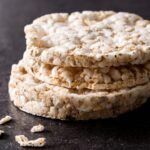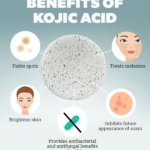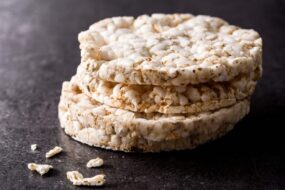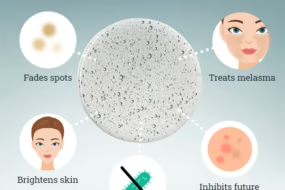
Introduction to soft leather and its popularity
Butter leather, also known as butter soft leather, has become a buzzword in the fashion and accessories world. Its unique texture and luxurious feel have captured the hearts of many. But what exactly is it about this leather that makes it so desirable? As more people seek out high-quality materials for their wardrobe, butter leather stands out as a favorite choice. This blog will take you on a journey to explore its origins, characteristics, and why it’s worth considering for your next purchase.
The origin of butter leather
Butter leather has an intriguing origin that traces back to traditional leather-making practices. Artisans sought ways to create softer and more flexible leather for various applications.
The name “butter leather” reflects its supple, buttery texture, which resembles the rich consistency of dairy butter. This softness comes from a meticulous tanning process combined with specific finishing techniques.
Historically, this type of leather was favored in high-end fashion and luxury goods due to its exceptional comfort and durability. Its rise in popularity can be attributed to both craftsmanship and advancements in technology that allowed for better processing methods.
Different types of leather and their characteristics
Leather comes in various types, each with distinct characteristics. Full-grain leather is the highest quality. It retains the natural grain and imperfections of the hide, making it durable and unique.
Top-grain leather is slightly processed. It’s sanded down to remove blemishes, offering a smoother finish while still maintaining some strength.
Genuine leather, often used for budget-friendly items, lacks the same durability as full and top-grain options. It’s made from leftover scraps and tends to wear out more quickly.
Patent leather features a shiny finish thanks to a plastic coating. While eye-catching, it can be stiff compared to softer alternatives like butter soft leather or nubuck that boasts both appeal and comfort.
What sets this leather apart from other types?
Butter leather stands out due to its exceptional softness and luxurious feel. This unique texture is a result of specific tanning processes that enhance the natural characteristics of the hide.
Unlike other leathers, this leather often has a buttery finish, making it incredibly pleasant to touch. It’s not just about looks; this type of leather offers unparalleled comfort when worn or handled.
Its pliability allows for easy manipulation in design, which is why it is favored in high-end fashion and accessories. The rich drape makes butter soft leather ideal for items like jackets, handbags, and wallets.
The process of making this leather
The process of making butter leather begins with selecting high-quality raw hides. These are typically taken from animals like cows or goats, known for their durability.
Once the hides are sourced, they undergo a thorough tanning process. This step is crucial as it transforms the raw material into something supple and long-lasting. The tanning agents used can vary but often include natural oils that contribute to the signature buttery feel.
After tanning, the leather is conditioned with additional oils and waxes. This not only enhances its softness but also adds a protective layer against wear and tear.
Popular uses for butter leather
Butter leather is prized for its versatility and luxurious feel. It’s commonly used in high-end handbags, where both aesthetics and durability matter. The softness of this leather adds elegance to any accessory.
Additionally, jackets crafted from butter leather are popular among fashion enthusiasts. They provide warmth without compromising on style, making them ideal for various settings.
Care and maintenance of butter leather products
Caring for this leather is essential to maintain its luxurious feel and appearance. Start by keeping it away from direct sunlight, which can cause the color to fade over time.
When cleaning, use a soft cloth or brush to gently remove dust and dirt. Avoid harsh chemicals; instead, opt for a mild soap solution if necessary. Always test any cleaner on an inconspicuous area first.
Moisture can be damaging, so wipe off any spills immediately with a dry cloth. If your butter leather product gets wet, let it air dry naturally—never use heat sources like hair dryers.
Storing items properly is crucial too. Keep them in breathable bags or boxes to avoid creasing and ensure longevity. With proper care, your butter leather products will remain stunning for years to come.
Alternatives to butter leather
Synthetic leathers like polyurethane (PU) or polyvinyl chloride (PVC) provide a similar aesthetic without the use of animal products. They often mimic the softness and flexibility associated with butter soft leather, making them attractive for fashion and accessories.
Plant-based materials such as Piñatex—made from pineapple leaves—are emerging as eco-friendly choices alongside traditional vegan alternatives like cotton canvas or hemp fabric. Each option presents distinctive qualities suited for different preferences.
Conclusion: Is butter leather worth the hype?
This leather has gained significant traction in the fashion and accessories world. Its soft texture and luxurious feel have made it a favorite among consumers seeking quality without compromising on style. Many people are drawn to its unique characteristics, which set it apart from other types of leather.
The origin story of this leather is intriguing, rooted in traditional tanning techniques that enhance its softness over time. This rich history adds depth to its appeal, drawing attention to craftsmanship and care behind each piece.
When comparing different types of leather, butter, stands out for its buttery smoothness. While various leathers serve specific purposes—like rugged cowhide or durable suede—none quite match the supple nature associated with butter soft leather.
The process involved in making this type of leather contributes significantly to its allure. Skillful artisans meticulously select hides and treat them using specialized methods that protect their integrity while enhancing softness. The result is a material you can’t help but touch—soft yet resilient.
For More Click Here














